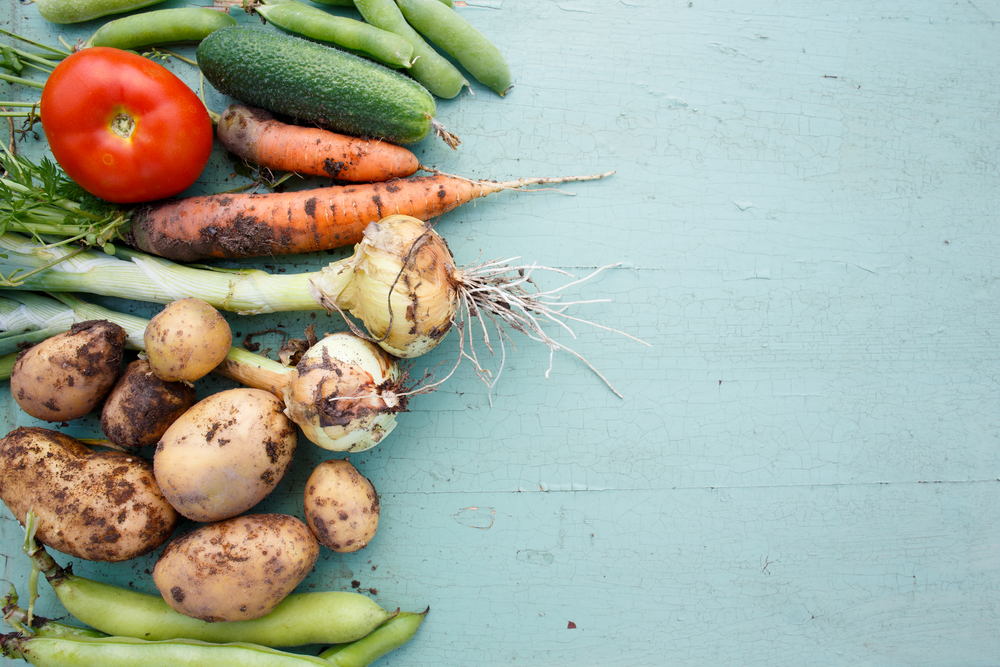This article is part of a sponsored series in partnership with LUNA Bar. It was originally published on the LUNA website.
It used to be that only health food stores sold organic foods, but now you can find them pretty much everywhere—from the farmers’ market to the biggest grocery chains. But more options also mean more decisions. Do you buy the organic apple or the conventional one? What’s the difference? Does it even matter?
Why Organic
Organic food contains fewer pesticides, herbicides, hormones, and antibiotics, all of which are good things for you to avoid. Organic food differs from conventional food in that it is grown without synthetic fertilizers, pesticides, or hormones, and there are a number of reasons that people choose to buy it. Some want to eliminate as many artificial chemicals and potential toxins as possible from their diets. Some care that organic farming is cleaner and friendlier to the environment. And for some, it’s about supporting an agricultural system of local growers and food producers. Whatever your reason for seeking out organics, it’s useful to have an understanding of what those claims on the labels (or at the market) actually mean.
Making Sense of Organic Claims
First, the official definition: The term “organic” is defined by The USDA National Organic Program as food or food products that have been grown without pesticides, synthetic fertilizers, genetically modified organisms (GMO’s), or ionized radiation. Organic products do not contain food additives, preservatives, artificial sweeteners or coloring, partially hydrogenated oils or Monosodium Glutamate (MSG). Organic meat, poultry, eggs, and dairy products must come from animals that are not given antibiotics or growth hormones like rBGH.
For a processed food to be labeled as “organic,” 95 percent of the ingredients must be organically grown, and the remaining 5 percent may be nonorganic ingredients that have been approved for organics by the US Department of Agriculture (USDA). Food labeled “made with organic ingredients” has at least 70 percent organic ingredients, while the remaining 30 percent must abide by strict USDA regulations as to what is acceptable.
Along with these phrases, also look out for the USDA organic seal. While not all organic foods contain the seal, those that do are guaranteed to come from a certified organic operation, which is inspected annually to ensure it is functioning within regulations.
Where to Start
Let’s face it, buying organic is often more expensive than buying conventionally produced food. Where should you start if your budget is tight but you want to reduce your exposure to potentially harmful chemicals? A great place to start is by choosing organic milk. Milk from pasture-raised, organic cows has been shown to contain higher levels of nutrients like omega-3 essential fatty acids, vitamin E, beta-carotene, and other antioxidants.
A good resource is the Environmental Working Group’s “Dirty Dozen” list, which was compiled to identify the top foods that contain the highest amounts of pesticides left on them even after cleaning and peeling. If you’ve got a limited amount to spend on organic produce, choose these 12 items (like apples, strawberries and spinach) first.
Another tip for saving money on organic produce is to sign up for an organic CSA (Community Supported Agriculture) program or visit your local farmers market and ask farmers about the way they grow food. Sometime farmers grow crops without pesticides but don’t have time for the paper work or can’t afford the application fees to be certified organic. Buying seasonally and locally and buying in bulk can also help save you dollars and cents.
You can also eat more organically by choosing foods that are made with organic ingredients. (LUNA Bars are a great example!)
The bottom line is that not all apples are the same. While scientists and nutritionists are still studying the exact effects that conventional farming may have on our health and if an organic strawberry has more vitamin C than a conventional one, one thing is clear: choosing more organics means fewer synthetic chemicals in your food and in our environment. Seems like a good thing!
Cover image courtesy of Shutterstock.





comments